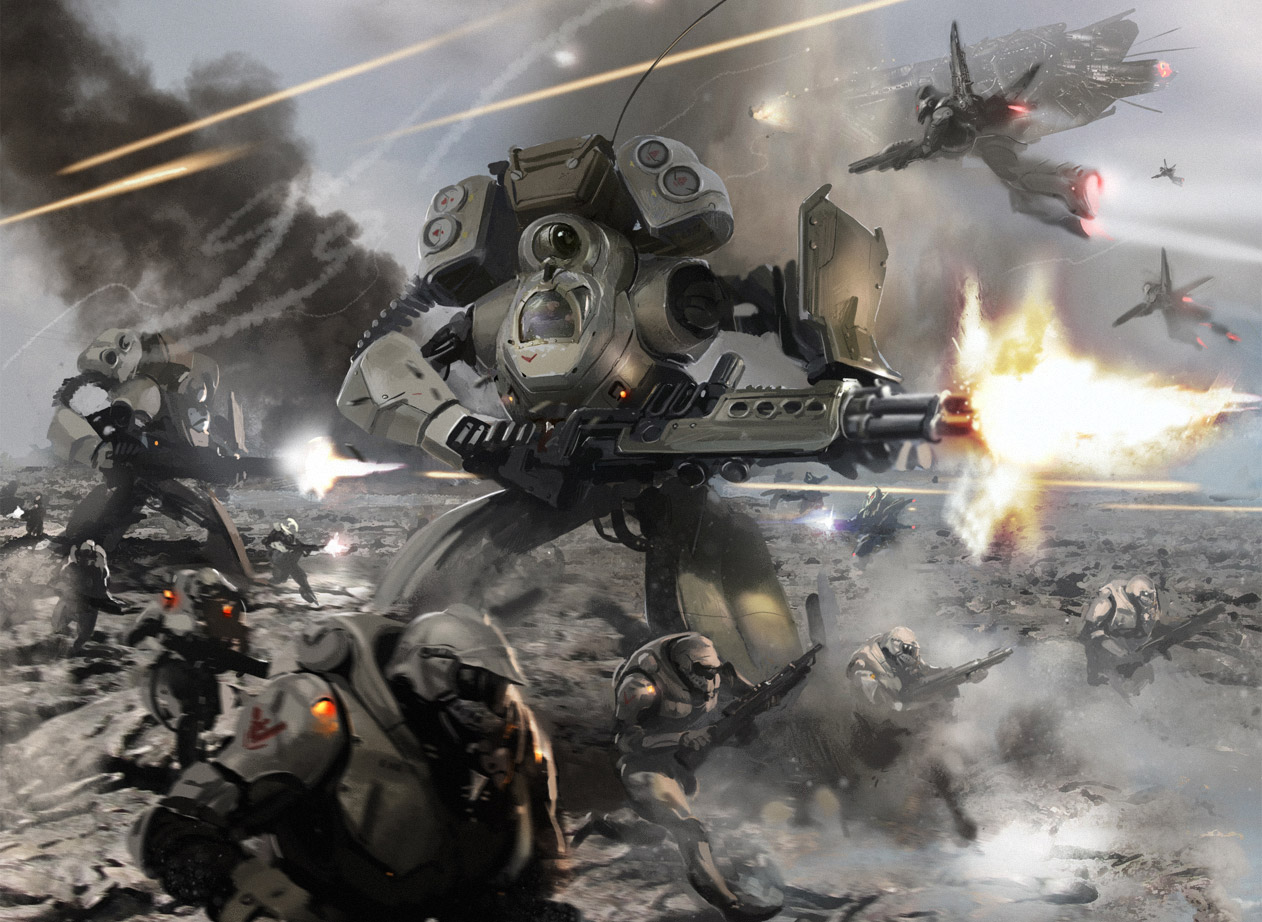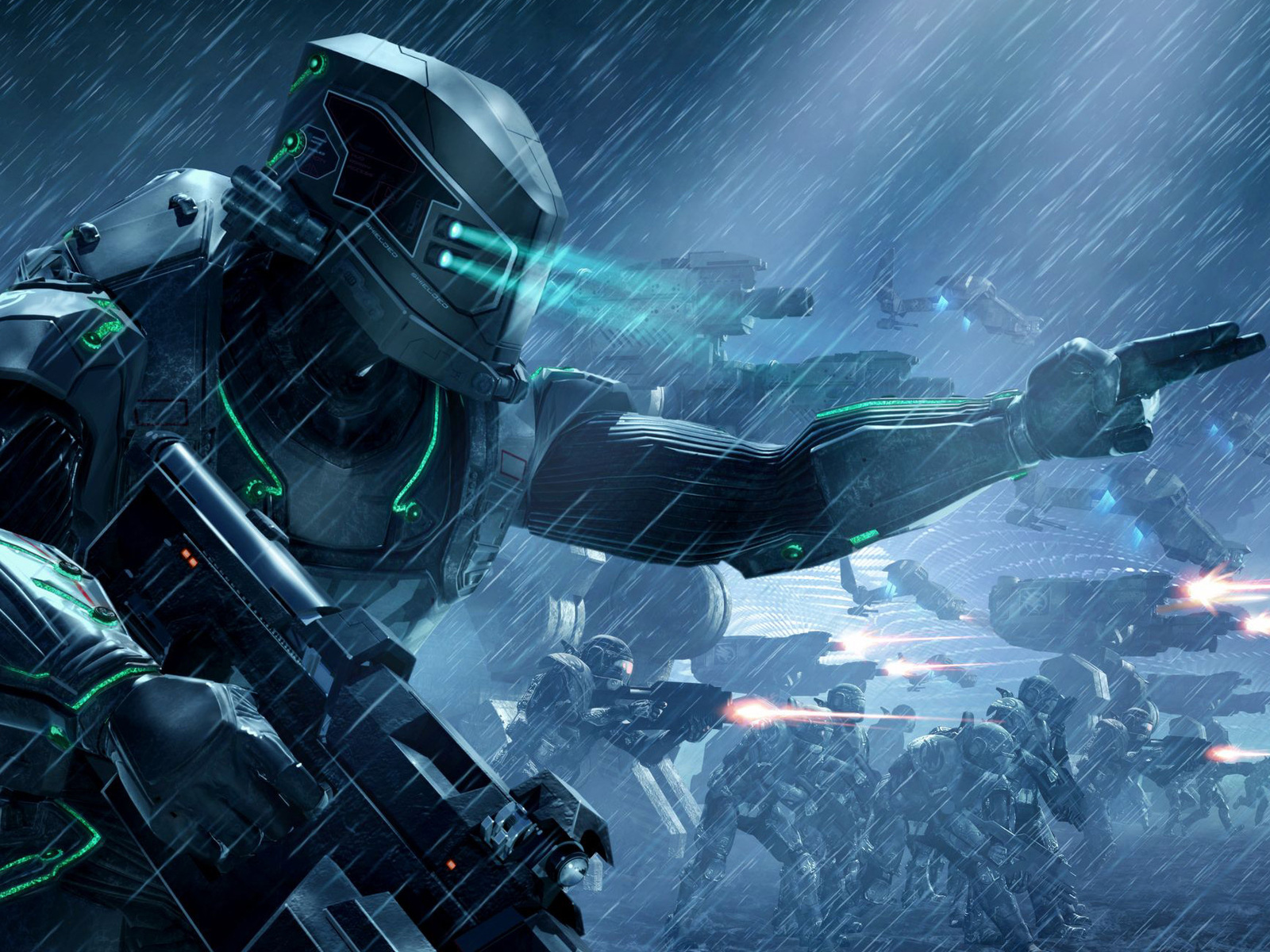Work continues in my scifi ruleset, Para Bellum. Today I'd like to talk about the rules for unit activation. The goal behind these rules was to come up with a system of activation that is engaging and gives options to players, outside the narrow box of "move then shoot" that most rulesets fall into, which is so boring and outdated.
With these rules presented below, I have a system that integrates an unit's own initiative with suppression and command & control very easily. Also the number of options units have upon activating, due to the multiple types of actions and possible combinations among them makes for a system that is simple at one hand, but rich, deep in tactical possibilities in the other.
Here we go:
When it’s a player turn to activate a unit,
he simply declares which unit he’s activating, and then rolls a D6 to determine
the number of Action Points that unit has for the current activation.
Result of the D6
|
Nº of Action Points
|
1
|
1
|
2-5
|
2
|
6
|
3
|
The action points available for a unit are
used to take actions. Once a unit is done taking actions, that activation is
over, initiative passes to the opponent, and that unit will only be able to
activate again on the next game turn.
Units take actions as a whole, and they apply
to all models in it.
Actions are classified as either Short or
Long, indicating they either require 1 or 2 action points to be taken,
respectively.
Short Actions
·
Move!
·
Take Aim!
·
Fire!
·
Charge!
Long Actions
·
Run!
·
Fire!
·
Stand Ready!
·
Move! The unit is
able to take a single move action, where each model is able to move up to its
Movement Value, in inches.
·
Take Aim: The unit
takes instance to fire, which makes its shoots more accurate.
·
Fire! The unit shoots
with its available ranged weapons. If its taken as a Short Action, only
non-heavy weapons may be fired. If its taken as a Long Action, all weapons may
be fired, including heavy weapons;
· Charge! The unit
attempts to engage an enemy unit in close combat with a single move (just as in
the Move! action).
·
Run! The unit is
able to take a double move action, which means each model is able to move up to
2x its Movement Value, in inches.
· Stand Ready! The
unit forfeits acting immediatelly to stand ready to react to enemy activity
nearby.
Each action can be taken only once, but they can
be combined with other actions, in any order, provided the unit has got
sufficient action points to spend.
Thus, a unit with 3 action points may take a Run! Long Action folowed by a Fire! Short Action, or vice versa; or Move!, then Take Aim! and finally Fire!
(as a Short Action), etc. A unit of 2 action points could instead Take Aim! and then Fire! (as a Short Action), or Move!
and then Charge!, etc.
However, if a unit takes a Fire! action, it can only Charge! If all the weapons fired have
the Assault Special Rule. If any
other ranged weapon is fired, the unit cannot charge in the same activation.
Also, although not forbidden, it would make
no sense to Take Aim! without a
following Fire! action (either Short
or Long), for the bonus to shooting provided by taking aim is lost if the unit
doesn’t take a Fire! action on that
same activation.
MODIFIERS TO Nº OF ACTION POINTS:
There are 2 modifiers that apply to this D6
roll for action points:
·
Stress Points
·
Order to Take Action!
Each point of Stress on a unit reduces
the number of action points available to it by 1. Thus, a unit with a single
point of Stress cannot get 3 action points, unless given an order. It can even
get no action points at all, if it rolls a 1(!).
When a unit is ordered by a HQ to Take Action! (see next topic, Command & Control), it increases its
number of action points available by 1. Thus, a unit given an order to Take
Action! get at least 2 action points in total, and has better chances of
getting 3, provided it doesn’t have Stress points, also.
Regardless of orders, a unit can never have
more than 3 action points. Note that an order is issued to the unit BEFORE it rolls the D6 for action points, so its
involves a risk of spending Command Points in vain (in case the roll of the D6
is a 6).
Both Stress and Take Action! modifiers are combined and then applied to the result
of the D6 roll. It may result in the unit getting no action points at all, if
the result of “modifiers + action points
of the D6” is equal to or less than 0, or getting 3 action points, if this
result is equal to or greater than 3.
______________
Ex 1:
A unit currently with 2 Stress points is activated. The player
decides to have a HQ give it an order to Take Action!, and spends a Command
Point to do so.
He then rolls a D6 to determine its number of action points for
this activation, and gets a 3, which means the unit gets a 2 action points.
Now, the modifiers of Stress points (-2) and Take Action (+1)
are applied, for a final total of a single action point.
Had the unit not been given an order, the 2 stress points on it
would completely negate the action points rolled on the D6, and the unit would
be unable to act at all in this activation.
Ex 2:
A unit currently with no Stress points is activated. The player
decides to have a HQ give it an order to Take Action!, and spends a Command
Point to do so.
He then rolls a D6 to determine its number of action points for
this activation, and gets a 6, which means the unit gets 3 action points.
Because no unit may have more than 3 action points in an
activation, the order to Take Action! is of no effect.
______________


Really neat, as usual! :)
ReplyDeleteWhat about linking the number of action points generated each turn to the quality of the unit?
A test should be done on an appropriate stat (discipline comes to mind, to keep thing simple) with "success" giving 2 poits, "failure" just 1 point and "perfect" (natural six on the test?) giving 3 points.
Of course if discipline is not the ok stat to use then another one should be created, complicating things a bit.
Just wondering :)
Keep up the good work!